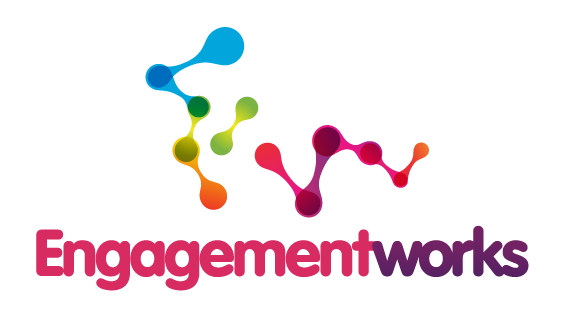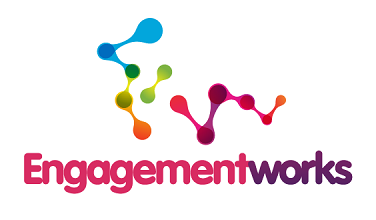Over recent months local government reorganisation in the Wellington region has been the focus of much media attention and in particular the various positions being taken by councils.
Given that this issue has been on-going since 2010 and that the Local Government Commission is only just entering the fray, it can't be claimed that the whole process is being rushed.
But taking into consideration that community consultation and engagement have been well short of best practice, it seems to be mostly about what local government politicians want, which is not necessarily what an informed public would support.
It would be fair to say that lodgement of an application to the Local Government Commission is a critical point in the overall process and people need to be aware of its significance.
After all is said and done, we could be on the road to changes that, as a community, we could regret.
The Local Government Commission is a creature of statute. It is bound by legislation and has to play by those rules.
It has very helpfully published guidelines to help those wishing to make an application to reorganise local government.
These guidelines discuss community support in some detail. This is because, under the legislation, applicants must demonstrate community support for the application.
Demonstrated community support must be from the local authority area affected, which means that, for example, Wellington couldn't lodge an application for reorganisation involving neighbouring Porirua without demonstrating community support from the Porirua community, and Hutt City couldn't apply to merge with Upper Hutt without the support of the people of Upper Hutt. All very simple really.
So far, two applications have been filed with the Local Government Commission for the reorganisation of local government in the Wellington region. Both go into some detail to satisfy the demonstrated community support requirement.
The reality is that, cutting to the chase, consultation has been about pre-determined options with little real community support.
Based on a population of 487,700 (2011) and total submissions of 3449 from the first four consultations, if each submission is treated as a different person, it represents a response rate of less than 1 per cent, which is hardly significant and I would presume falls somewhat short of any test for demonstrated community support.
According to the Local Government Commission guidelines, there is no one method for demonstrating community support.
Applicants, as well as the Local Government Commission, are free to decide what methods to use. Clearly these would be the affected community's consultation preferences in a community where the local council has taken the time to find out what these actually are. But how many councils have actually done this?
Even though the affected communities are still largely disengaged and decisions have already been made without their input, there is a great opportunity for the Local Government Commission to use the demonstrated community support rules to effectively wind back the clock and fill the community engagement gap by working with the applicant councils to undertake a much more inclusive and engaging community review process.
So, what would such a process look like?
To begin with it needs to start with a problem or issues statement and not a list of structural options. The question for people to ponder is what sort of community do you really want, for yourself, your children and your grandchildren? What would this community look like?
Engaging with the affected communities right at the start to help define the problem ensures that people's concerns and aspirations are included resulting in a much more comprehensively defined problem statement. In this case, problem definition is about agreeing on a strategic vision for a community, a district or a region.
Having agreed on a strategic vision and now knowing where we want to go enables attention to focus on how to get there. The next question becomes what sort of organisational structure will enable us to achieve our vision? What are the costs and benefits of the array of options that in a fully inclusive community based conversation will undoubtedly emerge?
The popular theory in terms of structure seems to be that bigger is better. No one has dared to suggest that, in the light of a clearly identified strategic vision, a smaller structure could be preferable. How do we know how much alignment exists between the strategic visions of the communities that are the subject of the current applications and those that may follow?
These are all questions and processes that the Local Government Commission under its legislative umbrella can seek answers to. Its guidelines contain principles for assessing community support and these focus very much on individual people.
By following these principles the Local Government Commission could ask each affected council to produce and implement an engagement plan that achieves full and inclusive public participation at each step of the review process.
As a result, a scenario could emerge that achieves alignment between communities, strategic vision and delivery mechanisms.
Given that this issue has been on-going since 2010 and that the Local Government Commission is only just entering the fray, it can't be claimed that the whole process is being rushed.
But taking into consideration that community consultation and engagement have been well short of best practice, it seems to be mostly about what local government politicians want, which is not necessarily what an informed public would support.
It would be fair to say that lodgement of an application to the Local Government Commission is a critical point in the overall process and people need to be aware of its significance.
After all is said and done, we could be on the road to changes that, as a community, we could regret.
The Local Government Commission is a creature of statute. It is bound by legislation and has to play by those rules.
It has very helpfully published guidelines to help those wishing to make an application to reorganise local government.
These guidelines discuss community support in some detail. This is because, under the legislation, applicants must demonstrate community support for the application.
Demonstrated community support must be from the local authority area affected, which means that, for example, Wellington couldn't lodge an application for reorganisation involving neighbouring Porirua without demonstrating community support from the Porirua community, and Hutt City couldn't apply to merge with Upper Hutt without the support of the people of Upper Hutt. All very simple really.
So far, two applications have been filed with the Local Government Commission for the reorganisation of local government in the Wellington region. Both go into some detail to satisfy the demonstrated community support requirement.
The reality is that, cutting to the chase, consultation has been about pre-determined options with little real community support.
Based on a population of 487,700 (2011) and total submissions of 3449 from the first four consultations, if each submission is treated as a different person, it represents a response rate of less than 1 per cent, which is hardly significant and I would presume falls somewhat short of any test for demonstrated community support.
According to the Local Government Commission guidelines, there is no one method for demonstrating community support.
Applicants, as well as the Local Government Commission, are free to decide what methods to use. Clearly these would be the affected community's consultation preferences in a community where the local council has taken the time to find out what these actually are. But how many councils have actually done this?
Even though the affected communities are still largely disengaged and decisions have already been made without their input, there is a great opportunity for the Local Government Commission to use the demonstrated community support rules to effectively wind back the clock and fill the community engagement gap by working with the applicant councils to undertake a much more inclusive and engaging community review process.
So, what would such a process look like?
To begin with it needs to start with a problem or issues statement and not a list of structural options. The question for people to ponder is what sort of community do you really want, for yourself, your children and your grandchildren? What would this community look like?
Engaging with the affected communities right at the start to help define the problem ensures that people's concerns and aspirations are included resulting in a much more comprehensively defined problem statement. In this case, problem definition is about agreeing on a strategic vision for a community, a district or a region.
Having agreed on a strategic vision and now knowing where we want to go enables attention to focus on how to get there. The next question becomes what sort of organisational structure will enable us to achieve our vision? What are the costs and benefits of the array of options that in a fully inclusive community based conversation will undoubtedly emerge?
The popular theory in terms of structure seems to be that bigger is better. No one has dared to suggest that, in the light of a clearly identified strategic vision, a smaller structure could be preferable. How do we know how much alignment exists between the strategic visions of the communities that are the subject of the current applications and those that may follow?
These are all questions and processes that the Local Government Commission under its legislative umbrella can seek answers to. Its guidelines contain principles for assessing community support and these focus very much on individual people.
By following these principles the Local Government Commission could ask each affected council to produce and implement an engagement plan that achieves full and inclusive public participation at each step of the review process.
As a result, a scenario could emerge that achieves alignment between communities, strategic vision and delivery mechanisms.
This item was published in Wellington's Dominion Post newspaper on 30 July 2013. http://bit.ly/13UEBuL. We have reused that paper's headline for this blog.

 RSS Feed
RSS Feed
